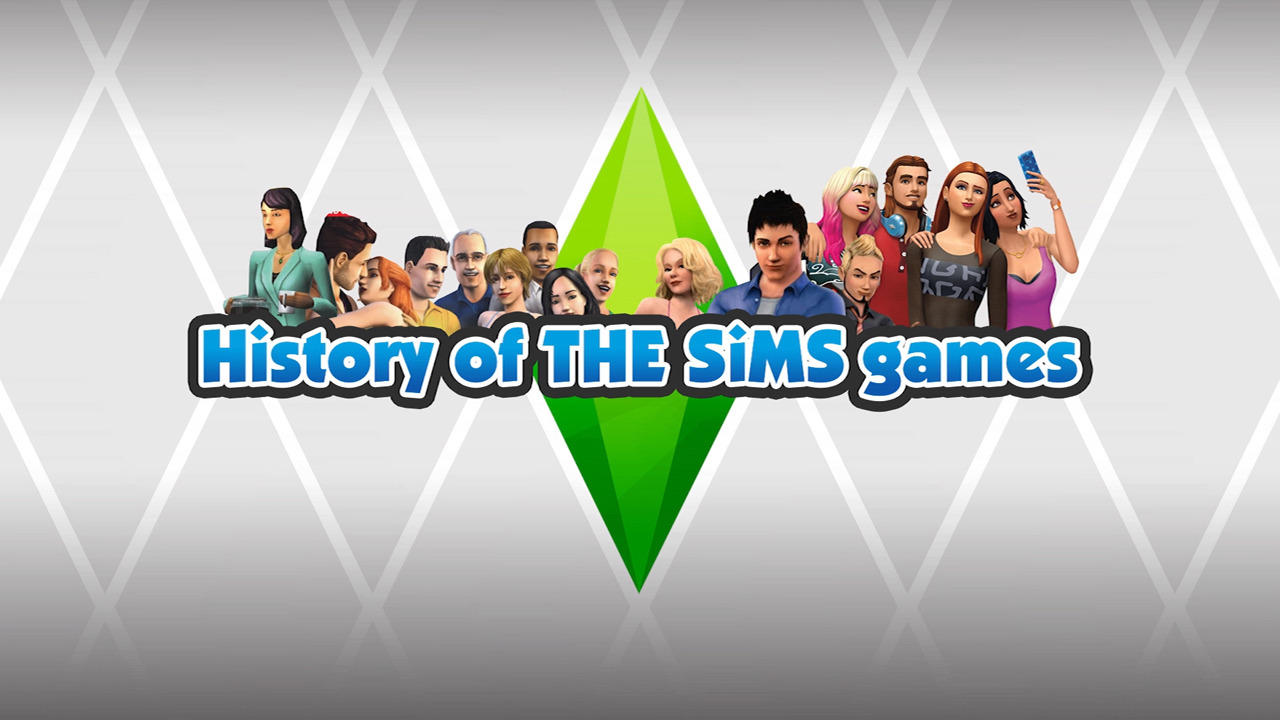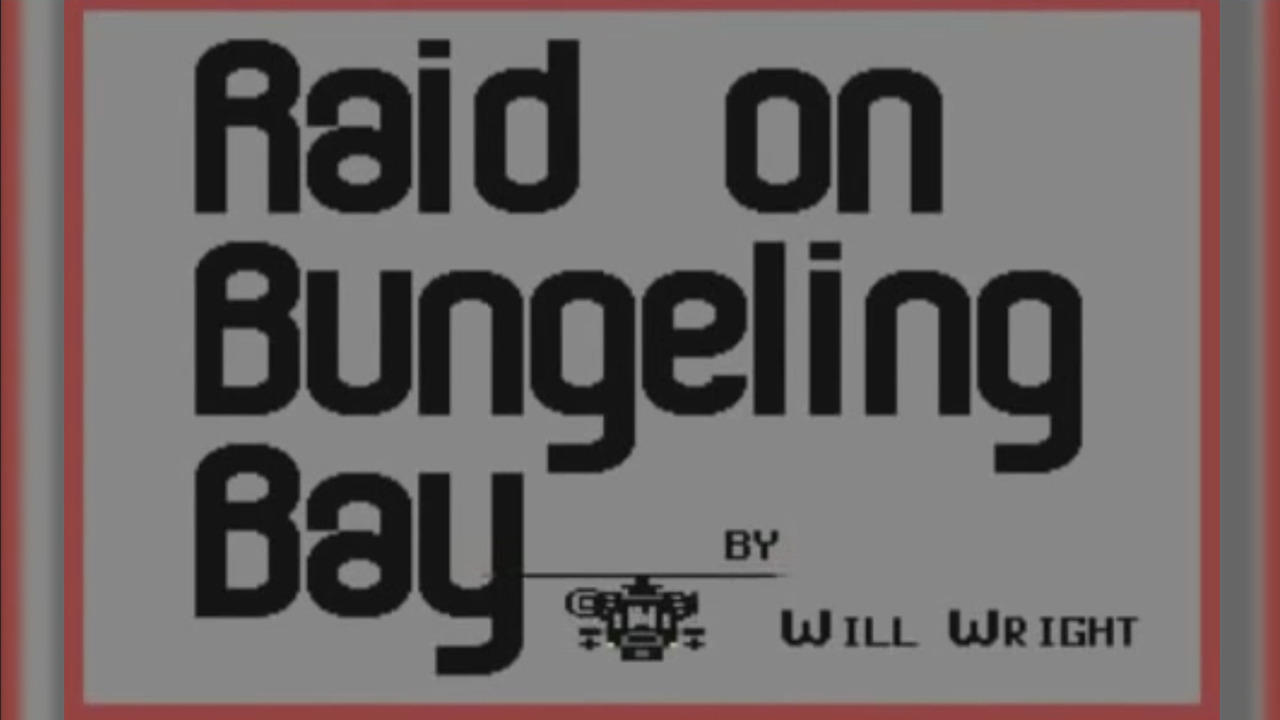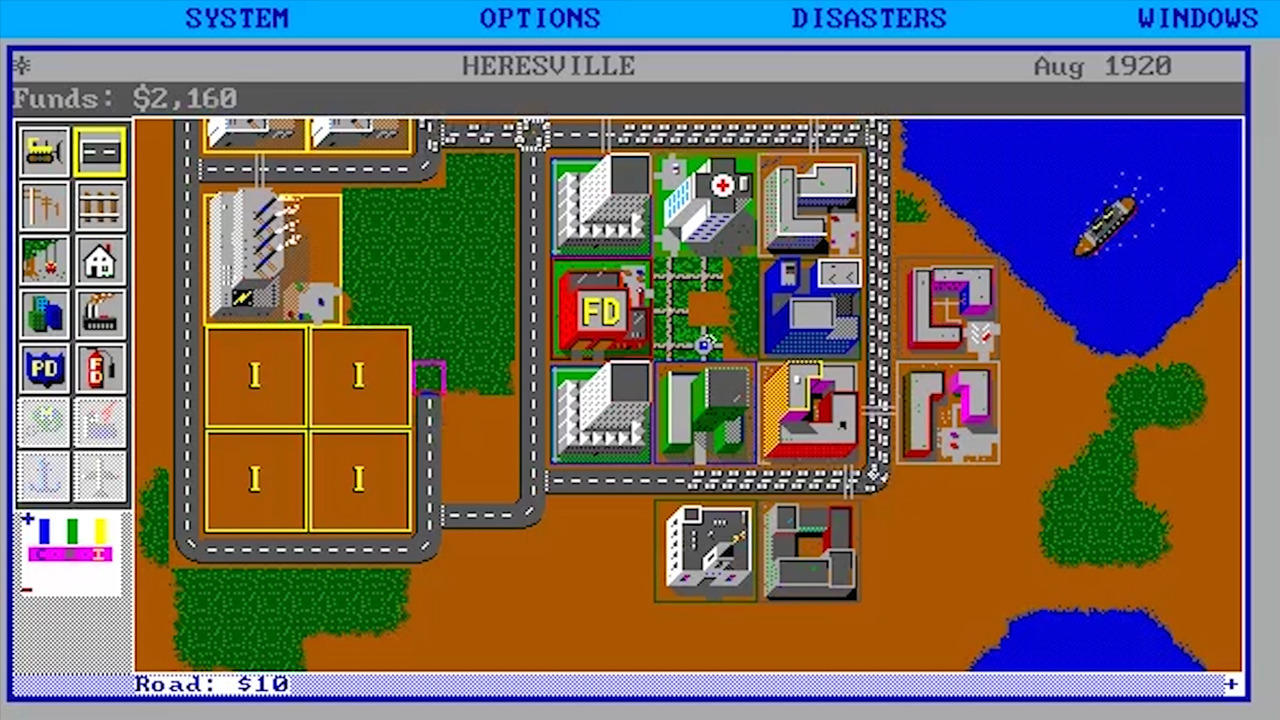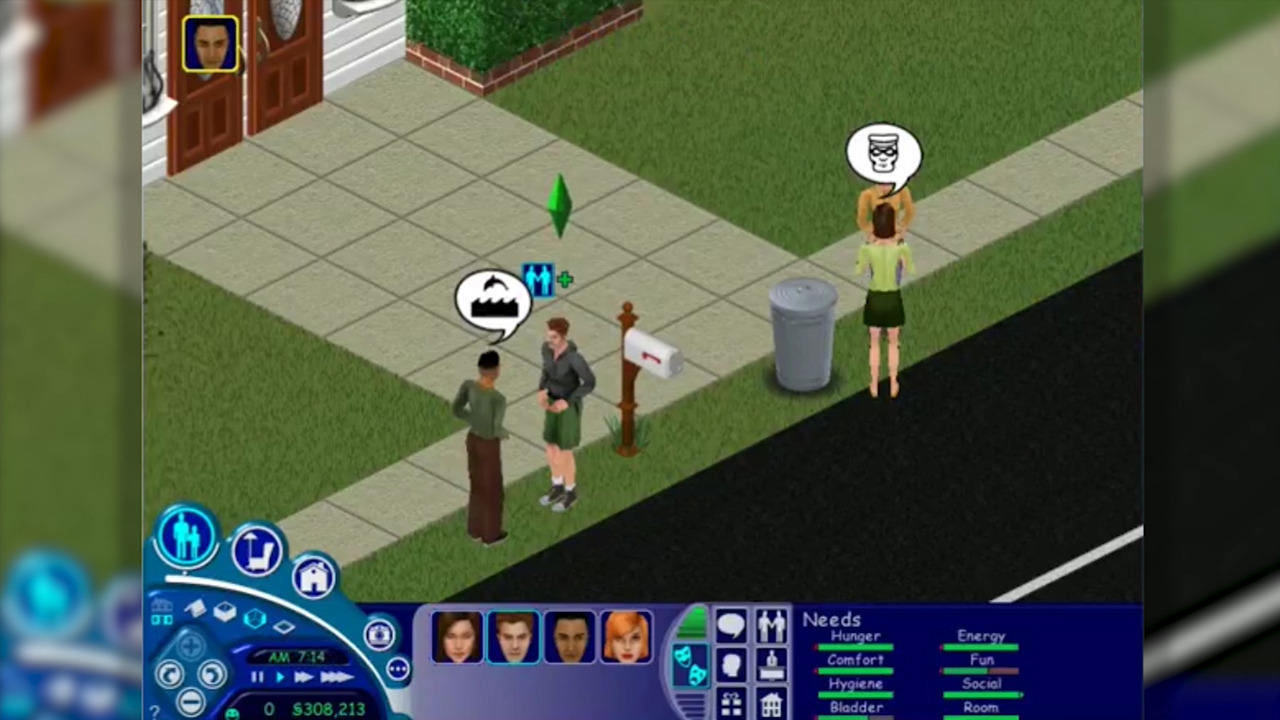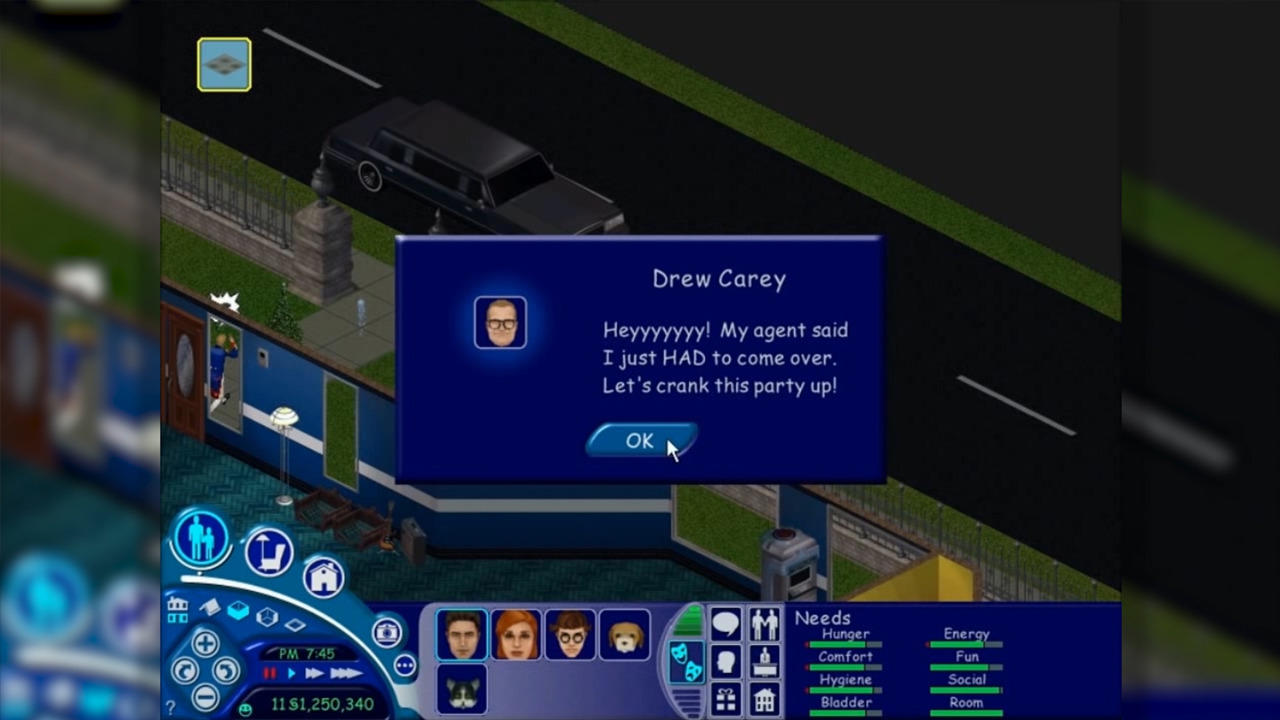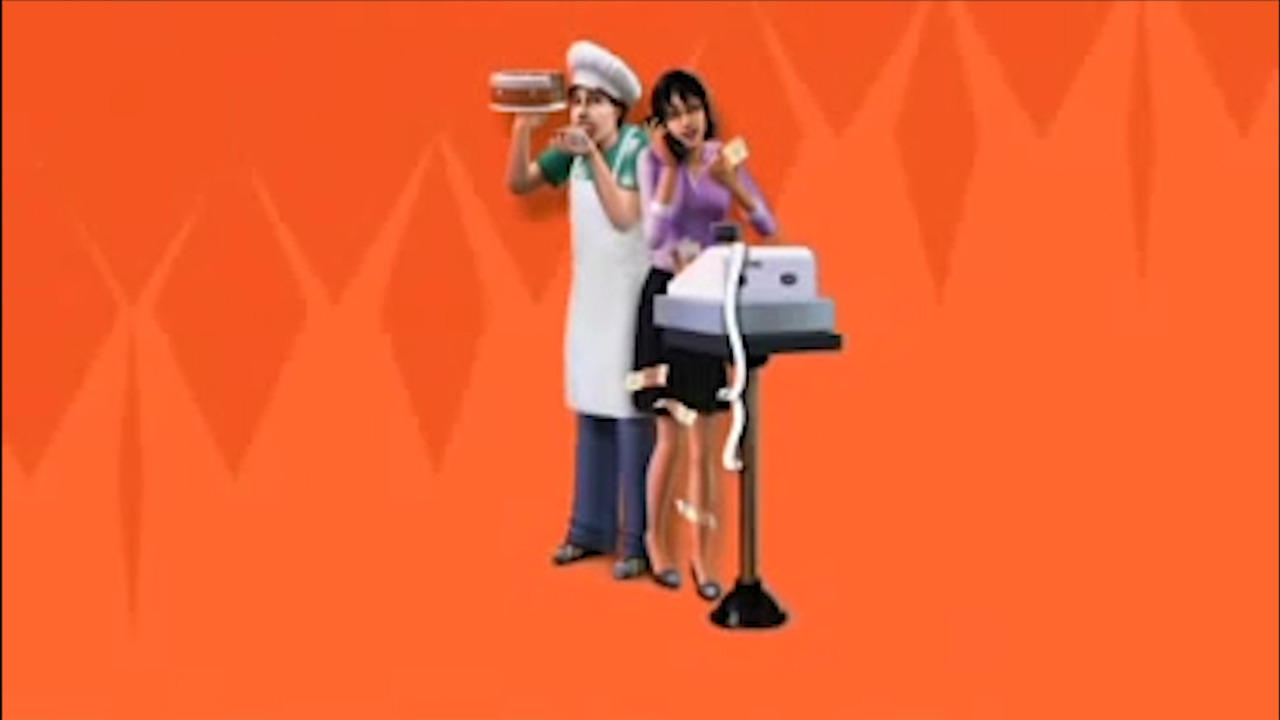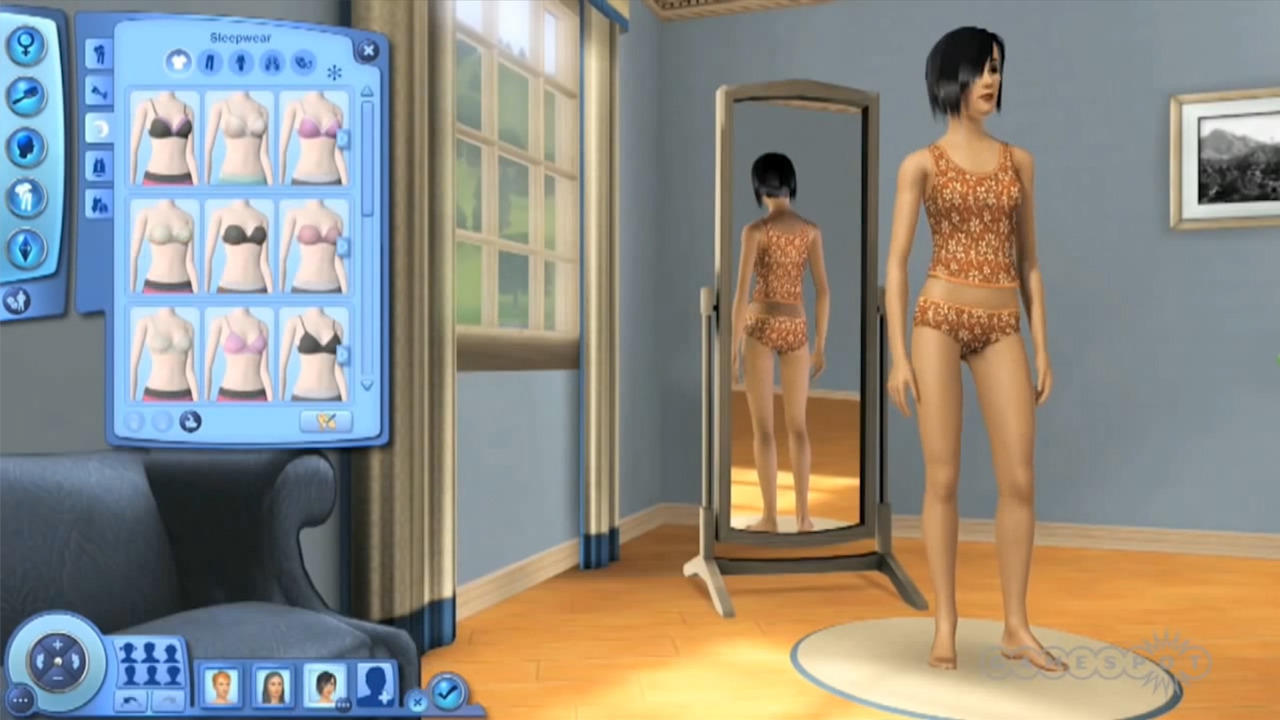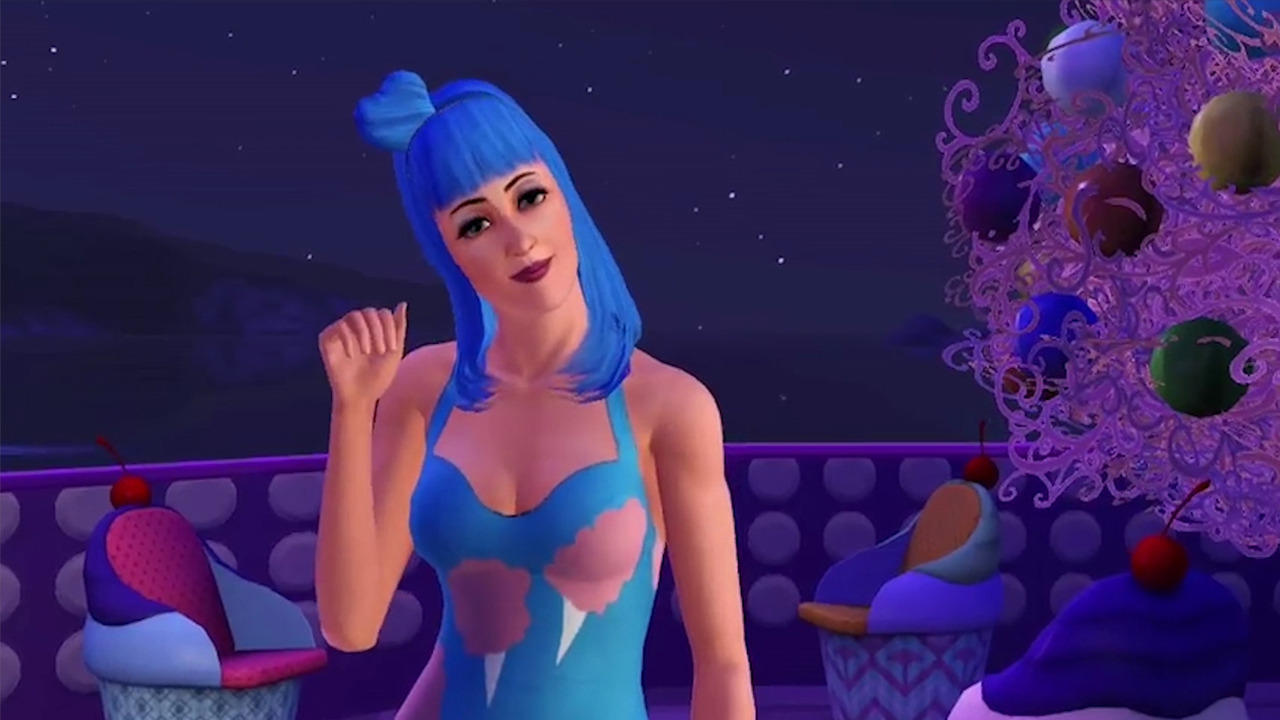History Of The Sims: How A Major Franchise Evolved From City-Builder To Life-Simulator
GameSpot may receive revenue from affiliate and advertising partnerships for sharing this content and from purchases through links.
Back in 2000, California-based developer Maxis released a game entirely focused on the micromanagement of someone's life, letting players pull their strings to make them do chores, go to work, and make friends. The Sims filled a niche that no one knew existed, becoming both a video game and cultural phenomenon. With the release of The Sims 4 on Xbox One and PS4, as well as the new Pets expansion pack, we thought we'd relive the history of one of the biggest PC franchises of all time.
This gallery starts at the very beginning, looking at the game that sparked the idea for The Sims, how creator Will Wright explored his burgeoning ideas further, and--eventually--the creation of The Sims. As with any long-running video game series, The Sims has had its ups and downs, as has Will Wright, developer Maxis, and publisher EA, and these highs and lows are also thoroughly covered.
For those that would rather see a video, we have a 30-minute look back at The History of The Sims, which covers the same touch points and delves much deeper into the history.
Raid on Bungeling Bay (1984)
While not an actual 'Sims' title, it was while designing Raid On Bungeling Bay that Will Wright realised he was having more fun creating the worlds than actually blowing them up, which was the core of the game.
He wondered what it would be like to breathe life into this world, instead of destroying it, and after the release of Bungeling Bay, he continued to tinker with the game's level editor. Wright would tweak variables and add elements like traffic, an ecosystem, and people, and watch as the simulated city grew and changed over time in response. He would read up on urban planning, and put the new theories he studied into practice by coding them straight into his simulator. This side project would eventually become SimCity.
SimCity (1989)
SimCity was a city-building simulation game, and at the time, a unique one. It could neither be won nor lost in the traditional sense; there were no cinematics, and it didn't build to a climactic, blockbuster ending. Game publishers were confused, asking Wright, "How are you going to make this a game?"
After struggling to get SimCity published, Wright co-founded a company called Maxis with Jeff Braun, an entrepreneur looking to break into the video game industry. In 1989, Maxis published SimCity. It had a slow start, but the game's popularity began to grow and by 1992 it had sold a million copies. SimCity was lauded by critics and fans alike, and it won countless awards. It was even used in urban planning and political science classes.
Various Sim Titles (1990-)
Realising it had struck a chord with the public with ‘hobby-style’ games, Maxis continued to release "Sim" titles throughout the '90s, including SimEarth and SimAnt, as well as sequels to SimCity. But none of the games Maxis was releasing were hitting the critical or sales success of the first SimCity. After experimenting with different genres, including publishing 1995's 3D Pinball for Windows, and suffering a string of commercial failures, it was considering acquisition offers. It was only when the studio was acquired by EA in 1997 that Maxis gained a new lease on life.
The Sims (2000)
The Wright family lost their home to a fire in the early' 90s. As they began the process of replacing their belongings, Wright wondered why people bought things. In particular whether they thought buying things would fulfill their wants and needs enough to make them happy. He began work on a game where players would build virtual house and fill it with items, but realised he needed something, or someone, to 'score' how well the house had been furnished.
Thus the Sim was born. He realised that these Sims could be more sophisticated than just house critics, that they could be actual people with their own lives to lead. Following EA's acquisition of Maxis, Wright was given the team he needed to put The Sims into full production.
Released in February 2000, The Sims allowed you to create and control a family through their everyday lives. With their starting account balance of 20,000 Simoleons (§), Sims could purchase an empty lot, or a build and decorate their own home. In-keeping with the open-ended 'hobby-style' philosophies of Wright's previous games, once the Sims were moved in, players were then free to do as they please with them. Sims had eight basic Needs that required management and they could get jobs, form relationships with others, and even die.
The Sims Expansion Packs (2000-2003)
In order to capitalise on the massive success of The Sims and satisfy a player base that was crying out for more content, Maxis began to release themed expansion packs. These packs would periodically introduce a variety of new objects, architectural styles, and even new gameplay mechanics for a lower price than the full game. They allowed Maxis to experiment with new ideas at a relatively low cost, and kept interest in The Sims high. The first Sims game had seven expansion packs, including Hot Date, Unleashed, and Makin' Magic.
The Sims Online (2002)
In December 2002, The Sims Online, an MMO-inspired version of The Sims 1, was released for PC. For $9.99 a month, the game allowed players to create one Sim avatar and move them into a world populated by other players.
But The Sims Online didn't stack up against the original game. There was no way to make custom content, a huge aspect of the original game, and a key feature in the game's biggest competitor: Second Life. Despite playing with thousands of other real people, players would be found frantically trying to build their skills than actually interact with each other. The game had a fully simulated economy, but it was totally destroyed by a bug that allowed players to duplicate their profit by interacting with a clothing rack.
In early 2008, the game was relaunched as the free-to-play title EA Land, where players could spend real money to get in-game Simoleons. Custom content was finally added, but it wasn't enough. EA Land was closed down just four weeks after its launch.
The Sims (2003), Bustin' Out (2003), The Urbz: Sims In The City (2004)
In 2003, the #1 PC game in the world made its console debut on PS2, Xbox, and GameCube. The Sims had two gameplay modes, the mission based Get A Life, which had your Sim try and hustle enough to move out of their mum's house, and Play The Sims Mode, which was more like classic Sims Free Play.
Bustin' Out, the next console release, was a very similar game, with a single-player story and a Free Play mode, but this time your Sim could get out of the house to visit other locations.
The Urbz: Sims In The City offered some tweaks to the usual Sims formula. As well as building relationships and fulfilling Needs, your 'Urb' had to build 'rep' with other Urbs to gain fame and fortune, and advance to new districts in 'UrbzVille.' The Urbz was the first Sims game to feature a weather system, and its music was written and performed in Simlish by the Black Eyed Peas, who also appeared in the game.
The Sims 2 (2004)
Sims now had personality. They would form memories, and had distinct Wants and Fears, which would feed into an ultimate lifetime goal: Sims could now be family or career-oriented, and long for money or power. Sims would remember important life events, both positive and negative, and if they constantly met their goals, they'd live happier, longer lives.
But the biggest change was the addition of genetics. In The Sims 1, there was no guarantee that a child would resemble either of its parents. In The Sims 2, after a successful 'WooHoo,' the female Sim could become pregnant, and the resulting baby would inherit not only appearance from its parents, but aspects of their personalities too. Sims passed through six life stages, with each offering unique age-related experiences.
But it wasn't just the Sims that received some huge changes. Players could now view the world in full 3D thanks to the game's new engine. Days of the week were added, Build and Buy Mode received their share of gameplay tweaks and new objects, and Create-A-Sim was radically overhauled to improve Sim customisation.
The Sims 2 Expansion Packs And Stuff Packs (2005-2008)
Over four and a half years, eight expansion packs were released for The Sims 2, and while packs like Pets and Bon Voyage were very similar in style and content to Sims 1 expansions, most packs for The Sims 2 made huge changes to the game.
Realising how hungry the audience was for new things, Maxis began to release themed Stuff Packs. These were cheaper than expansions, but included a load of new items. There were nine stuff packs for The Sims 2, including a tie in with clothing brand H&M, as well as everyone's favourite flatpack furniture store, IKEA.
The Sims 2 (Console, 2005), Sims Stories (2007-2008)
The enormous success of The Sims 2 on PC led to it being ported to many different platforms. The base game was ported to home consoles, and some expansions--such as Pets--were ported as standalone games to handhelds like the PSP and Game Boy Advance. Three games under the banner "Sims Stories" were released between 2007 and 2008, where you could play through the Story Mode of pre-made Sims, before creating and playing your own. The Stories games were tasters, specifically geared towards people whose PCs weren't high spec enough to run the main games.
Spore (2008), Will Wright Leaves Maxis (2009)
In 2008, Maxis released Spore, a simulation that would allow players to control life on an unbelievable scale: from the cellular, to the galactic. You could create a microscopic organism, and control their development and evolution through five stages, observing the emergence of their intelligence, social capabilities, and eventually their ascension into space.
Spore was the last game Wright would work on at Maxis. He left in 2009 for a small startup called Stupid Fun Club, an "entertainment development studio" where ideas they came up with could be manifested in other media like video games. In 2011, he joined the board of directors on The Sims Online's old competitor, Second Life.
While he hasn't been in the public eye with new projects in recent years, Wright's contribution to video games cannot be understated. In 2001, he won the lifetime achievement award at GDC, and in 2007 he became the first game designer to be awarded a BAFTA Fellowship. His ideas changed the way we think about video games and brought gaming to a whole to new audience.
The Sims 3 (2009)
Previously, when you wanted to send your Sim somewhere such as a community lot, you'd meet a loading screen between the two areas. In The Sims 3, all you had to do was zoom out from the Sim's home lot and you'd be on the neighbourhood map, without a loading screen in sight. If you sent your Sim to work, you could now follow their journey across the neighbourhood.
To make The Sims 3 feel more like an actual 'living world,' there was an optional new feature called Story Progression, which meant that all Sims in the neighbourhood would continue on with their lives without your input. It meant that some Sims, even ones from families you'd created, could die, form new relationships, and even have children.
The Sims 3 Expansions And Stuff Packs (2009-2013)
EA shipped 11 expansion packs for The Sims 3. Most were inspired by previous packs, so you had the usuals: Pets, Seasons, a couple of holiday packs, and a chance for Sims to go to University.
Some, like Showtime, added new ways to interact with your real life friends, with in-game messaging, and the ability to send your Star Sim on tour into your friend's game. Of all the expansions, Into The Future was the only really original take, offering a futuristic vibe and new items to make your Sims' lives easier. The Sims 3 also had nine Stuff Packs, including High-End Loft Stuff, Town Life Stuff, and Katy Perry's Sweet Treats.
MySims (2007), The Sims Social (2011), The Sims Freeplay (2011), The Sims Medieval (2011)
With The Sims train showing no sign of slowing down, more spinoffs were to be expected. These came in the form of the cutesy MySims series, which was aimed at younger players. It spawned five sequels of its own.
In 2011, The Sims went back in time. The Sims Medieval was a weird mash up between The Sims and a regular kind of RPG. Sims only had two Needs you had to keep track of: Hunger and Energy, and they did'’t pass through life stages. You also couldn’t really build anything any more. You were given a bunch of pre-made castles and buildings, and you could decorate them. However, if you wanted to be a castle architect, then you were out of luck.
Also in 2011, you could connect with your Facebook friends in The Sims Social. With 16 million players in its first week alone, it quickly became one of the most popular games on Facebook. But due to a bunch of bugs and a lack of new content, it quickly dropped in the ranks and was closed down just two years later.
Mobile game The Sims Freeplay is still updated regularly, and differs from main Sims games in that it functions in real time. There's no speeding things up; one real-world minute is one in-game minute, and activities and interactions take time.
The Sims 4 (2014)
After 2013's lacklustre SimCity reboot, Maxis needed The Sims 4 to be a hit. Its biggest new feature was SmartSim, which meant express emotions based on events happening around them. Build and Buy Mode were condensed into one, and you could sculpt the look of your Sim to exactly how you wanted them.
But despite these gameplay improvements, a lot was missing in The Sims 4. Toddlers--a whole life stage--were noticeably absent when the game launched. Swimming pools, a mainstay of The Sims since the first game, were also unavailable. The huge, seamless worlds introduced in The Sims 3 were also no more. Create A Style was gone, there were no basements, grocery stores, or school/work locations on the neighbourhood map.
The Sims 4 Expansion, Stuff, And Game Packs (2015-Present)
The Sims 4 has only had four expansion packs since its release, with the recent Cats and Dogs being the latest. Instead of expansions, there's been five Game Packs: smaller than an expansion but bigger than a Stuff Pack, these have introduced new gameplay mechanics like parenting skills, and also vampires. A lot of the missing, fan requested features, such as toddlers and pools, were eventually patched in. The game has 12 Stuff Packs, with the development of the next one, Laundry Day Stuff, being guided by Community votes. A console version of the game was also released, and a mobile version is in development for next year.
